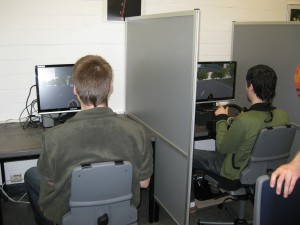 In the presented work we compare machine learn- ing techniques in the context of lane change behavior performed by humans in a semi-naturalistic simulated environment. We evaluate different learning approaches using differing feature combinations in order to identify appropriate feature, best fea- ture combination, and the most appropriate machine learning technique for the described task. Based on the data acquired from human drivers in the traffic simulator NISYS TRS 1, we trained a recurrent neural network, a feed forward neural network and a set of support vector machines. In the followed test drives the system was able to predict lane changes up to 1.5 sec in beforehand.
In the presented work we compare machine learn- ing techniques in the context of lane change behavior performed by humans in a semi-naturalistic simulated environment. We evaluate different learning approaches using differing feature combinations in order to identify appropriate feature, best fea- ture combination, and the most appropriate machine learning technique for the described task. Based on the data acquired from human drivers in the traffic simulator NISYS TRS 1, we trained a recurrent neural network, a feed forward neural network and a set of support vector machines. In the followed test drives the system was able to predict lane changes up to 1.5 sec in beforehand.

